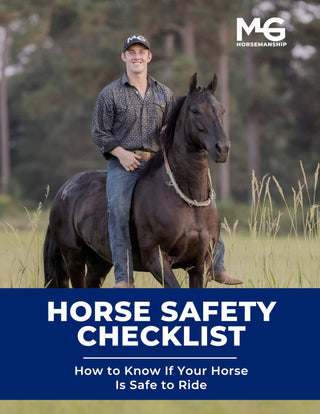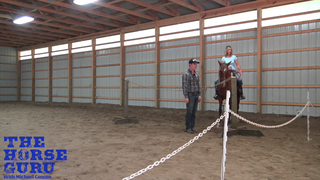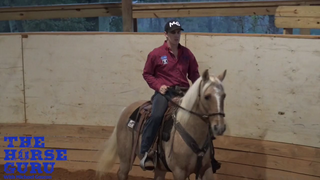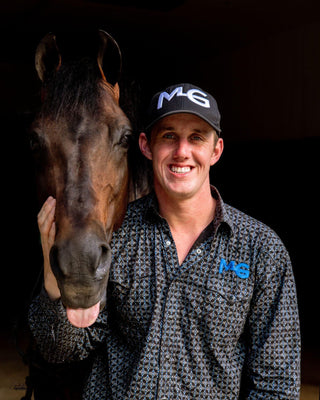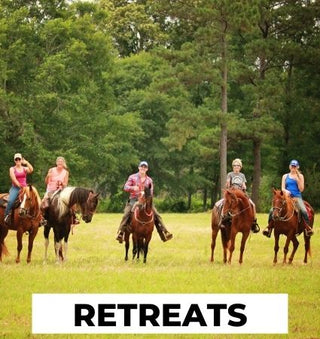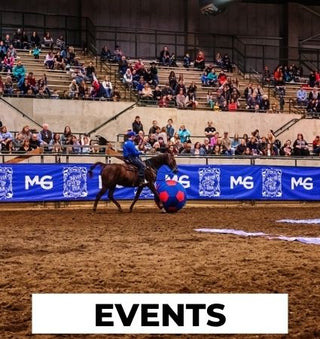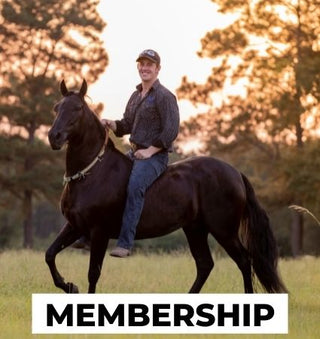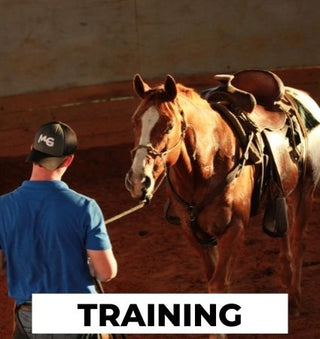Watch the Video Here or continue reading below!
In this stage of your horsemanship journey—“5th Grade”—you’re beginning to ask your horse for more refinement, more communication, and more responsiveness… all from the ground. This Q&A session from the Horse Help Challenge is packed with valuable tips on groundwork, tie training, flexing, and more.
Whether you’re transitioning from 4th grade or looking to improve soft feel and body control, this post is for you.
Groundwork Beyond 4th Grade
Advancing Without Riding
If you've completed the preschool through fourth-grade groundwork, you're probably wondering: What’s next? The answer is simple—you advance your horse in riding without riding. In 5th grade, the emphasis is on refinement, understanding pressure, and developing softness.
While this particular session didn’t dive deeply into long lining, there’s a 2020 Challenge replay video available that includes long lining and Liberty training, as well as introductory trick training.
How to Tie a Horse That Pulls Back
Set Them Up to Succeed—Not to Struggle
Question: How do you train a horse to tie if they’ve pulled back before?
Answer: The key is preparation. Use:
-
A solid MG halter
-
A flat wall that won’t budge
-
Good, safe footing to prevent injury
You’re not just tying a horse—you’re setting up a training moment where the wall does the work, not you. You supervise, but the wall is the teacher. Don’t intervene unless there’s real danger. Many people sabotage the lesson by “rescuing” the horse too soon.
Pro tip: Check out the "Benefits of Tie Time" video in the Start Here Series of the Horse Help Challenge.
How Long Should a Horse Be Tied?
Every horse is different. Some might learn in one session, others need:
-
Days or weeks of consistent tie time
-
A commitment to not quitting too soon
The goal is to build mental stamina, self-regulation, and responsibility.
Flexing 101: From the Ground and In Motion
Understanding Resistance, Softness, and Connection
Question: Why does my horse drop his head and only give his nose? Is that resistance?
This is a common scenario when a horse:
-
Gives his nose, but not his neck
-
Responds better on one side than the other
The Solution:
Flexion should be full-body communication, not just a token nod. Flex until the horse gives:
-
To your hand
-
Around to your stirrup
-
Without bracing, leaning, or resisting
If they resist or don’t try, increase pressure until they look for the right answer.
Signs Your Horse Understands Pressure:
-
Pull their face → their feet should move
-
Spook test → they don’t drag you
-
Change direction → they do it lightly and calmly
How to Flex a Mini Horse From the Ground
Proper Long Lining Setup for Small Horses
When working with minis:
-
Stay behind the horse in early driving stages
-
Keep lines low to avoid triggering spinning or flipping
-
If using a surcingle, flip it upside down so the rings are on the bottom
This helps maintain leverage and consistency in your cues.
Fixing Flexion Issues on the Move
How to Work Through Resistance While Riding
Horses often resist flexing in motion by:
-
Raising their head
-
Getting stiff on one side
The Fix:
Pick one side and stay there.
-
Don’t “half-ass” both sides.
-
“Whole-ass” one side until the horse softens and drops their head willingly.
After the horse yields, the release gets longer until softness becomes their habit.
Nipping at the Stirrup During Flexing?
Redirect Their Focus
If a horse tries to nip at your stirrup while flexing:
-
Simply ask for more flexion, past your leg
-
Don’t scold, redirect
This reduces the habit without creating conflict.
Flexing With Obstacles in the Round Pen
Should You Remove Distractions?
Question: Can my horse flex with stuff in the arena like obstacles, other horses, or plastic bags?
Answer: They should.
Training with obstacles builds mental focus and trail-readiness. If your horse can’t flex around a tarp in the round pen, they won’t be able to respond when they see a plastic bag on the trail.
Don’t create a sterile environment. Train for the real world.
How Far Should a Horse Flex?
The Ideal Goal for Standstill Flexion
At a standstill, a horse should:
-
Touch their nose to your leg
-
Flex far enough so their face passes your leg as you begin to ask for hindquarter movement
This sets the stage for turning, disengagement, and softness under saddle.
Dealing With a Stiff-Necked Mustang
Constant Contact vs. Pulsing Pressure
For a strong or stiff horse:
-
Try pulsing pressure: bump-bump-bump until they soften
-
Some horses respond better to this than to constant pressure
Key Tip:
You’re not trying to win a tug-of-war. You’re teaching them that giving to pressure brings relief.
Should a Horse Flex Without Moving Their Feet?
Yes! Absolutely.
A horse must:
-
Flex both directions without stepping
-
Learn that moving their feet does not end the flexing
If they move, keep flexing. You’re not adding energy—you’re just waiting for the right answer.
Final Thoughts: Build the Steering Wheel
Flexing is your steering wheel. If your horse can’t flex, they can’t steer, and you’re not safe. Flexion builds:
-
Softness
-
Body control
-
Mental connection
Whether your horse is young, reactive, or green, flexing daily—in different environments—builds trust and control.



